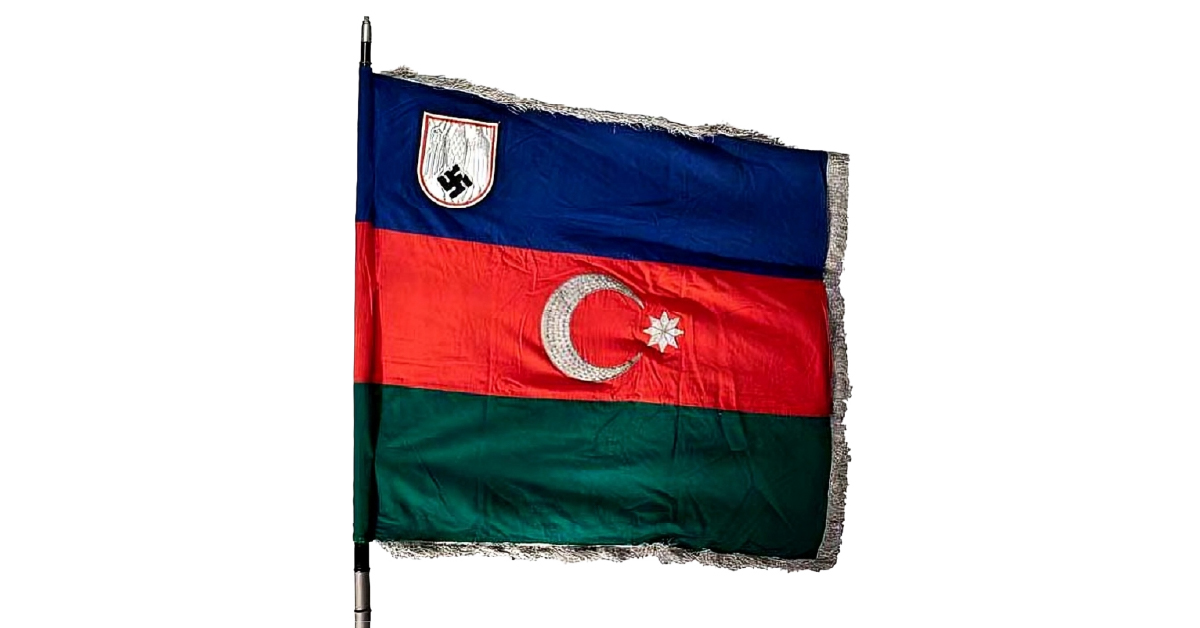2025
2025
2025-05-08

In 1941, when Nazi Germany attacked the Soviet Union, considered the multiethnic composition of the Soviet state as one of the key factors for securing its victory. Germany hoped it would be able to co-opt part of the Soviet peoples to its side—against the Soviet authorities. This plan was to be implemented under the slogan “A Crusade Against Communism for the Liberation of Oppressed Nations.”
To carry out this plan, Germany’s military intelligence and counterintelligence agency, the Abwehr, established contact with former leaders of the national republics that had existed on the territory of the Soviet Union between 1918 and 1921 and were now in exile. At the beginning of the war, national committees were formed to carry out propaganda among the peoples of the Soviet Union. Many responded to Germany’s proposal, especially White Guard émigrés, nationalists, and former leaders of the republics.
During the war, to administer the Soviet regions occupied by Germany, the Ministry for the Occupied Eastern Territories was established. One of its main objectives was to use the peoples of the Caucasus and Transcaucasia against the Soviet authorities. The German leadership formed a special military unit called “Bergmann” (“Mountaineer”)[1], in which Azerbaijanis made up a large portion. With similar expectations, the Turkestan Legion was formed from representatives of the Central Asian republics.
In December 1942, addressing the issue of forming national legions, Adolf Hitler stated: “I consider only Muslims to be trustworthy. I view the organization of purely Caucasian battalions as a highly dangerous undertaking, but I see no danger in creating exclusively Muslim units.” [2]
In 1941, the German command formed three battalions in Warsaw from prisoners of war originating from the Transcaucasian republics. To carry out propaganda among Azerbaijanis, contact was established with Mammad Amin Rasulzadeh, the founder of Musavatist Azerbaijan, who was living in Romania at the time. He later moved to Berlin, where he led the Azerbaijani emigration community in Germany.
Several Azerbaijanis actively collaborated with the Nazis, including Abdurrahman Ali oghlu Fatalibeyli, Ali Mammadov, head of the Azerbaijani organization “Birlik”, Alekper Shamkhorsky, Jumshud Mammadov, an activist of the Azerbaijani National Committee, and others.
Soviet officer Abdurrahman Ali oghlu Fatalibeyli, after being captured, collaborated with the Germans, hoping that a German victory would lead to the restoration of Azerbaijan's independence. Together with German officer Gloger, he led the first Azerbaijani battalion.
Since 1941, under the command of the Eastern Legions in Poland, the Caucasian-Muslim Legion had been operating. In 1942, it was renamed the Azerbaijani Legion.
Azerbaijanis also served in the 811th Turkestan elite infantry battalion. According to the March 10, 1943 report by its commander, Major Kurth, Azerbaijanis made up 84 out of the 733 soldiers in the battalion.
In 1942–1943, another legion composed exclusively of Azerbaijanis operated in Ukraine under the command of the Eastern Legions.[3] This unit was later reorganized as the 314th infantry regiment of the Turkic 162nd division.
Between 1940 and 1945, Azerbaijanis also served in the "Brandenburg" construction and training special regiment, in the Cadre (Eastern) Volunteer Division, in Abwehr’s reconnaissance and sabotage units such as Abwehrgruppe 106, the “Darius Group” (Abwehrgruppe 201), Abwehrgruppe 203, and other units.
“Caucasus” and “Musavat” were among the reconnaissance and sabotage groups composed of Azerbaijanis were. These groups even managed to infiltrate Soviet Azerbaijan. Of all the peoples of the region, the most success in fostering anti-Soviet sentiment was achieved among Azerbaijanis. This was especially evident among the youth, who associated the “liberation” of their country exclusively with Germany.
One of the active agents of the German intelligence services was the Azerbaijani Jumshud Razaevi Mamedov. He worked in Berlin, for the Azerbaijani National Committee and frequently visited prisoner-of-war camps with the aim of conducting propaganda among Azerbaijani POWs and recruiting them.
Overall, between 1941 and 1945, approximately 28,000 Azerbaijanis served in the German armed forces. [4] According to other sources, around 40,000 Azerbaijanis fought in the ranks of Azerbaijani military units of the Wehrmacht. [5]
Although the leadership of Azerbaijan today strives to emphasize the participation of Azerbaijanis in the Great Patriotic War, the facts tell a different story. Among those who fought from the territory of Soviet Azerbaijan, a significant number of those with Azerbaijani citizenship were not Azerbaijanis, but rather Armenians, Talysh, Lezgins, and representatives of other ethnicities. Azerbaijani propaganda has consistently avoided mentioning their national affiliation.
Although the leadership of Azerbaijan today strives to emphasize the participation of Azerbaijanis in the Great Patriotic War, the facts tell a different story. Among those who fought from the territory of Soviet Azerbaijan, a significant number of those with Azerbaijani citizenship were not Azerbaijanis, but rather Armenians, Talysh, Lezgins, and representatives of other ethnicities. Azerbaijani propaganda has consistently avoided mentioning their national affiliation.
By the way, out of the 139 heroes of the Azerbaijani SSR during the Great Patriotic War, 43 were Azerbaijanis, 34 were Armenians, with about thirty of them coming from Artsakh (Nagorno-Karabakh). Of course, the Aliyev regime prefers to present them simply as Azerbaijanis. Furthermore, Azerbaijani collaboration with Nazi Germany was among the most active. The Azerbaijani authorities make every effort to conceal these facts. Currently, in the Armenian territories under the control of the Republic of Azerbaijan, monuments dedicated to the participants of the Great Patriotic War and military commanders who contributed to the victory are being destroyed. They target monuments dedicated to the Soviet Heroes of the USSR, not only those of Armenians but also of Russian ethnicity.
[1] For more details, see Eduard Abramyan, "The Forgotten Legion: Unknown Pages of the Special Purpose Unit 'Bergmann'," Yerevan, 2005.
[2] A. Vert, Russia in the 1941-1945 War, Yerevan, 1969, p. 536.
[3] Since 1943, the Turkic 162nd Division.
[4] Eduard Abramyan, "The Forgotten Legion: Unknown Pages of the Special Purpose Unit 'Bergmann'," Yerevan, 2005, p. 233.
[5] Sergey Drobiazko, Andrey Karashchuk, Eastern Legions and Cossack Units in the Wehrmacht, http://www.erlib.com.